In the event that the world as we know it crumbles, the ability to forage for edible flora and fauna will be an important skill. While stockpiling necessary items will undoubtedly help you to survive if things go south, learning how to gather and prepare food is crucial if you’ve got a long-range outlook in mind. As fall approaches, you might consider learning how to make acorn flour.
Why Acorns?
You might have heard before that acorns are poisonous. That’s absolutely true of raw, unprocessed acorns, or acorns that have been improperly processed. They can make you sick due to the high level of tannins they contain. You’ve likely heard of tannins before; they are a compound found in many commonly consumed items, including wine and tea
There are a couple reasons why you should put processing acorns at the top of your “To Learn for Preparedness” list. First off, they’re actually quite good for you, so long as they’re prepared so that they aren’t actively bad for you. They have a high fat content, a little protein, and carbohydrates for instant energy.
Second, acorns are plentiful. A large oak tree is said to be able to produce up to 1,000 lbs. of acorns per year. Even when you cut out weight from shells and moisture, that’s a significant amount of consumable calories that can be processed for eating through the year.
Third, acorns are found pretty much everywhere. While some acorns are better than other for consumption, they’re all edible when processed. Wherever you may roam (assuming it’s late summer to early fall there), there’s likely an oak tree full of acorns you could beat the squirrels to.
Finding Acorns
Oak trees can be found all across the U.S, Europe, and the rest of the Northern hemisphere. There are some species found in Asia and Central America, as well. North American oaks are, more or less, split into two groups, red and white. You can tell the difference between red and white oaks because red oaks tend to have leaves with pointed tips, while white oaks have rounded leaves. Check the following link to learn how to properly identify and how to consume oak – nature’s powerhouse.The best acorns for processing tend to come from white oaks due to lower tannin levels, but red oak acorns can be eaten if they’re what you have to work with. Oaks that produce larger acorns are ideal, like the bur oak. Some varieties offer sweeter nuts that are more palatable, like bur, chinquapin, and chestnut oak varieties.
Acorns begin to drop at the end of summer through the beginning of autumn. Keep an eye out for increased squirrel action so you don’t miss them! Be sure to process acorns within a couple days so they don’t mold. Otherwise, you’ll need to dry them (pread them out on a screen for an extended period, from a couple weeks to a few months) for processing at a later day.
How to Make Acorn Flour
So, let’s assume you’ve found a worthy oak tree. Here’s how you can turn acorns into versatile, nutty acorn flour.
- Collect the acorns – You’ll need a large amount to make this process worth your while. Collect several pounds of freshly fallen acorns. Avoid dirty, broken, or very dry looking acorns. Then, you’ll need to make sure they’re free from weevils. To do this, drop the acorns into a bucket of water and toss the floaters. You can also check for the tiny bore holes that the adult acorn munching beetles leave. Toss the wormy acorns.

- Boil – Bring a large pot of water to a rolling boil, then add your acorns. Quick, now! You only want the acorns in the boiling water for 30-60 seconds. Pour into a colander to drain water. This step serves to soften the shells a bit, making them easier to crack.
- Crack – Now it’s time to crack the shells on your acorns. You can do this with a handheld nutcracker, a mallet and towel, or with a large nutcracker.

- Dry – Now it’s time to dry out the cracked nuts. This can be accomplished in a dehydrator, by leaving them out in the sun on screens to dry naturally, or in a low temperature oven.

- Separate meats – Time to get to the good stuff! To extract the actual nuts, often times known as the meat. Because you’ve already dried out the cracked nuts, it should be very easy to just rub off the shells and skins with your hands. Once you’ve got the meats out, you’ll need to give them meats a quick mashing with a potato masher.

- Leach – This is the part where you get rid of the tannins, effectively making the inedible acorns edible. There are several ways you can do this, but cold-leaching is today’s preferred method. To do this, you’ll place the smashed nut meats into a cheese cloth bag. Then, you’ll place the bag into a five gallon bucket of cold, clean water. Give the bag a squeeze or two to make sure the water is getting between the pieces. Leave it to soak for about half an hour, drain the water, and then do it again. Repeat this cycle until the water is clear.

- Dry – Dry out leached, smashed meats on a cookie sheet by spreading them thinly and then placing the cookie sheet in the oven at 200 degrees F for a few hours or until dry.

- Mash – This can be accomplished with a simple, handheld potato masher, or you can employ the use of an immersion blender or food processor if doing it by hand doesn’t sound appealing. You can also use a coffee grinder or conventional grain mill.

- Sift – Using a mesh colander, sift the flour to make sure there are no large or hard pieces remaining. Now you’ve got usable acorn flour. Store it in an airtight container and it should be good for several months. While it doesn’t preform exactly like regular wheat flour, there’s still a lot you can do with it by adjusting your favorite recipes a bit.

While making acorn flour is a bit more time consuming than bopping over to the supermarket to pick up a bag of regular wheat flour, consider practicing this skill now so that you have the know how to utilize nature’s fall bounty in a SHTF situation.
You may also like:
World’s Smallest Battery Powers House For 2 Days (video)
The Ultimate Survival Tree That Grows on Almost Every Street in America
24 Prepping Items I Don’t Spend Money On
If you liked our article don’t forget to pin it!
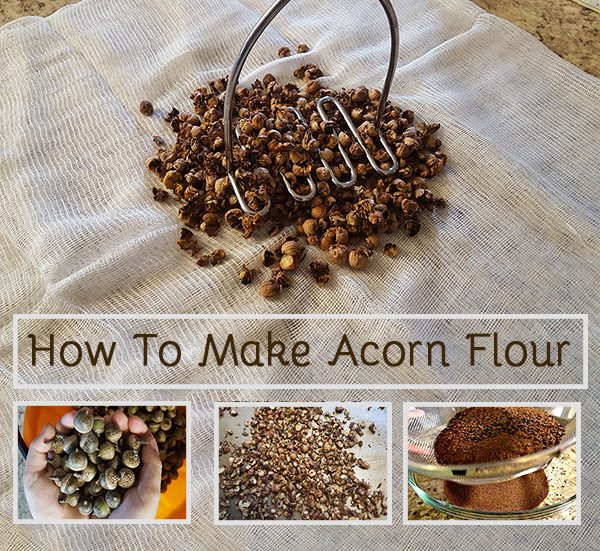

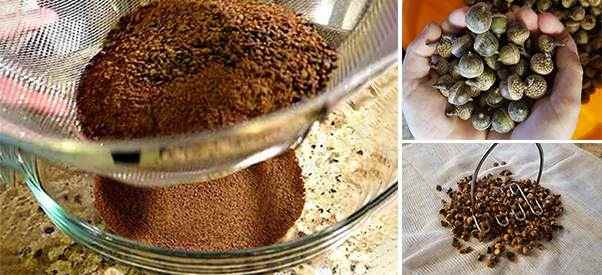
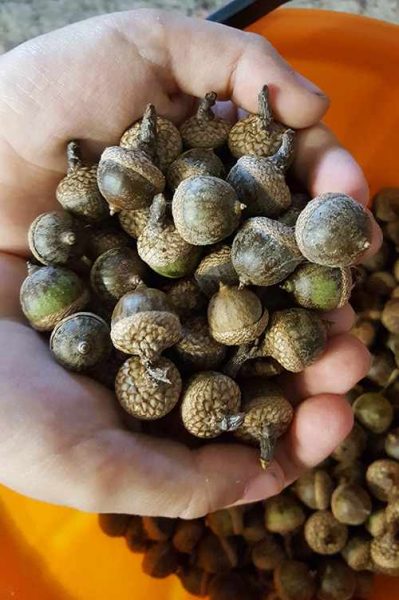
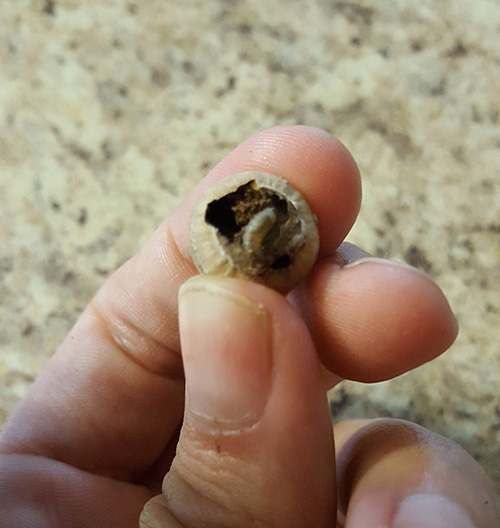
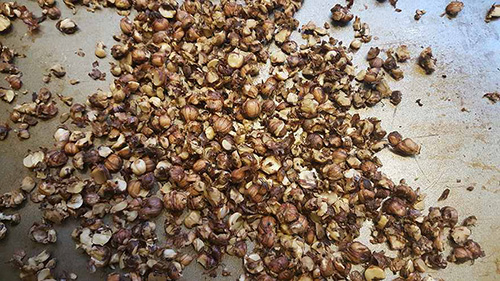
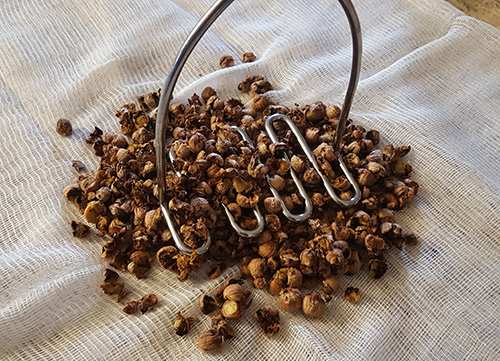
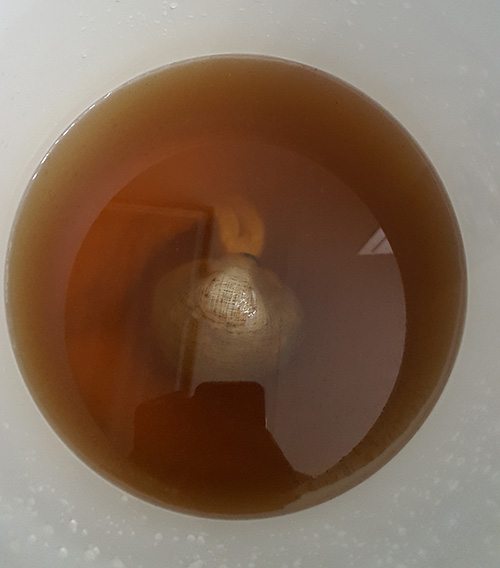
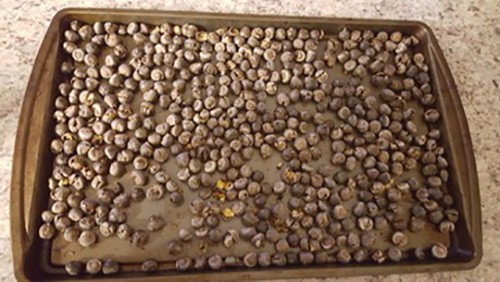
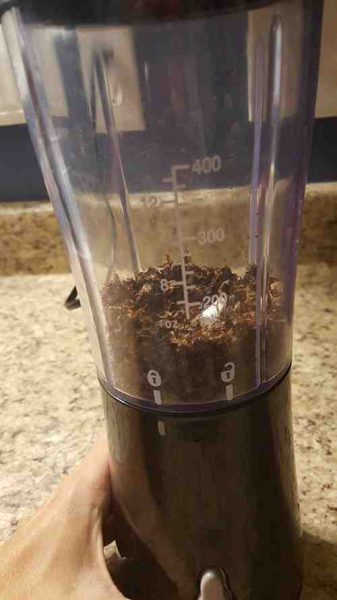
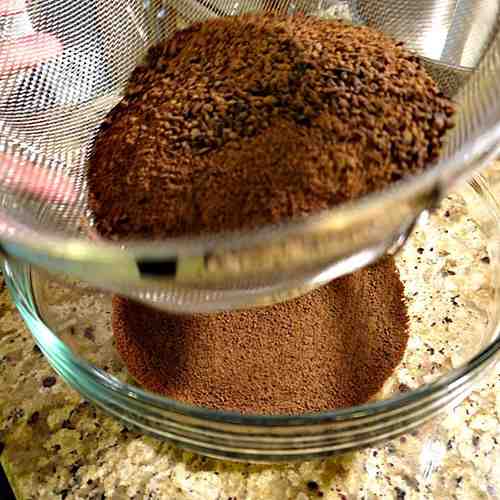











Necessary items to accomplish this task according to the article. Cold clean water, five gallon bucket, cheese cloth, potatoe masher, sifted, hand cranked coffee grinder, a pot to boil water in, and something to lay acorns on while drying in the sun. I am excluding any devices requiring electricity because there may not be electricity. Better secure these items now. Just more to add to the wish list. One bite at a time.
This article brings up a very important point, there may be no electricity or internet when SHTF. It might be wise to print each article and save them in a binder.
Acorn coffee isn’t too bad either!
Curley bull; EXCELLENT information,,,thank you. ^5
how do you make that? Would you keep the tannins?
Acorn meal has to go through roasting to make “coffee”, which doesn’t get the tannins out. I’ve read somewhere that roasting boil leached acorns gives the best result and a very much green, slightly underroasted coffee bean taste.
Ok my oven and blender wont work. I keep turning them on but nothing. I love it when you teach me about shtf and assume i still have gas and power….makes about as much sense as buying a digital survival book. After shtf you just go fire up your computer and read , read ,read …duh
Raj; I found your comment very entertaining, and funny.☺ This site is teaching us how to do things, BEFORE SHTF. So, that we have some information, on what to eat, how to process things. When SHTF, does hit, it is UP TO YOU, TO FIGURE OUT HOW TO PROCESS THINGS, using gas grill, or having some charcoal on hand. Making a fire. You want them to tell you how to do that too? I bought a four mill a long time ago. I had a choice of electric or hand grinding. I chose hand grinding, because I figured if I was grinding my own flour, using my wheat berry’s, (canned-food storage) there would not, BE ELECTRICITY.
I always ASSUME,,how to do things without electricity or gas, when any instruction is given. It is about survival. Time to learn. Don’t rely on others to spoon feed you. Don’t mean to be insulting. Get creative, make an ‘oven’ with cardboard and foil paper. Many sites tell you how to do it. Good luck.
@ Raj, Sorry, there is no guarantee that you will have power. Obviously, you have never been in a real disaster situation.
I agree, however the lack of gas or power should not stop you form baking, it’s called fire and the blender bit well that is just a bit of hard work by hand.
As for digital books they are great easy to carry 100s or 1000s of digital book on a digital device, no need for any power if you have a solar charger cheap and rasy.
Just use Euell Gibbons’ recipe from Stalking the Wild Asparagus; lot easier.
Can’t the water from the first leaching be saved, rendered down to concentrate the tannic acid and also be used in tanning leather. Just thinking outside the box here.
I wondered that too. There has to be some use to five gallons of tannic acid water. Okay, chemists on the list, what can you use 5 gallons of dilute tannic acid for?
I believe that I read somewhere that the American Indian did just that.
I did just that when leeching a batch of red oak acorns. Dark red water. I saved it and condensed it somewhat. It wasn’t very acidic, so I added some vinegar. I used the broth to ‘tan’ a possum pelt that I didn’t care about.
I’d call it a partial success. The pelt was nicely tanned, but stunk. I hadn’t scraped off all of the fat. It went rancid. I didn’t have time to fuss over it, so didn’t get to move onto the currying stage.
I plan to try again with some ‘volunteer’ squirrels (less fat) with the bucket of acorns I gathered recently.
Black walnut hulls work really well if you want tannic acid. Most natives preparing hides do a process called brain tanning. Lots of work but it leaves a hide that is soft and can be sewn with a bone needle. Tannens do tan but make a tougher hide. Battery acid and water will tan a hide also but learn what you’re doing or you can get badly hurt.
Better than rotting brains (they have to be putrid to work), Native Americans hung leather goods from the ceiling to let smoke work thru them. The acid in the smoke tanned them, and cedar was burned at night to ward of evil spirits and bugs, the clothes smelled of cedar with a touch of barbecue. Save black walnut hulls to boil traps and clothes in because the oil kills all scent.
Always have to scrape the fat off the hide, otherwise, as you found out, rancid hide. That’s what kept the Indian women busy, scraping the hides and then tanning them.
I have several binders with info like this kind of stuff but this one sounds the best so far since it’s one of the most versatile and easily found items in the USA.
If you’re a serious acorn nut (lover of), do like we used to. Rake up all the acorns and leaves you can. Pile it all on the north side of a barn (or house/garage). Leave it go till spring. The shells will turn black, but even high tannin acid acorns (black oaks and reds) should be sweet. This is why squirrels bury some acorns and eat others. White oaks are sweet enough for them to eat right off, but tannin can be high enough to be toxic in others. the acorns have to be kept cold and damp, exposed so tannin leaches out. Use them before they sprout or they make a lot more tannin. There’s a company in Germany that uses tons of acorns to make a nut butter, and this is how they do it with black oak acorns in the Black Forest. BTW, you can bury cabbages deep under the leaves (do not allow them to touch). They’ll stay fresh till spring, when they try to sprout. Cook that like broccoli. peace!
As kid I gathered white acorns after they fell and lay on the ground through 2 or 3 good rains. They were almost sweet and really good eating. Just peel and enjoy.
Peeled cracked acorns in wet sand along a stream will be leached in 24-36 hours. Bite it…if it isn’t puckering your mouth it’s done.
At that point without drying;
You can boil the cracked nut meats into a soup that tastes like pinto beans. Salt and season to taste. Simmer till tender.
You can grind (this is where natives used grinding stones) to a course flour and make bread. I like it simply mixed with some oak ashes and water to make a paste then cook like a pancake on a hot flat rock in a fire. The ashes act a bit like baking powder to raise or leven the dough.
You can make a good venison soup with leached cracked nut meats, cubed deer meat, chopped wild onions, water. Boil and season to taste. Cubed potatoes add once the nut meats are getting tender would be good but not essential. Some tribes add dried corn kernals and unshelled pinion nuts at the begining of cooking time.
You can toast to lightly roast the coursely ground nut meats and boil to make a fair coffee.
If you want salt and don’t have it, burn ghost plant and use the ashes to taste. It is used as a native seasoning but isnt really salty..but does help the flavor.
Good comment
Good posts from you! Native Americans burned bean plants and saved the ashes from hickory, pecan, and oaks, using a very light dusting of that instead of salt.All of those ashes will contain salt (potassium chloride). Hickory and pecan twigs can be boiled down (to dryness) and the residue is hickory salt.
My goodness this is getting very complicated.
I wish we had better oaks where I live now. All we have are jack oaks or scrub oak. More short bushes than trees but they do bare a small acorn. High mountain desert, juniper forrest. We do use the small prickly pear cactus, fruits and pads, juniper especially the beries, desert mallows and more. It’s good to learn what’s available where you live.
Just a side note, the tannins which are not pleasant to the belly, do have important properties which make them good for the skin and useful to help healing wounds.
When I was a teenager I burned my face while I would on a hunting trip. I hadn’t taken any first aid supplies with me, so I soaked toilet paper in tea and applied it to the burn. My father almost had a heart attack when he came to pick me up and I had green toilet paper stuck to my face on the burn. HOWEVER, the doctor when he looked at the burn said it wouldn’t scar as the tannin in the tea leaves had helped heal the burn and to just keep applying cool teal compresses to the burn area until it stopped hurting.
Just had a wisdom tooth pulled — so expect dumber posts from me in the future — oral surgeon said to apply tea compresses to the bleeding socket as the tea is mildly astringent and will seal off the bleeding and aid clotting quicker. Black tea from China, Japan, Ceylon, India or wherever, will not be available EOTW, so acorn tannin can be used in its place for burns and bleeding. I would boil the water to insure sterility before applying it to the wound after it has cooled.
The weevils are actually quite tasty too. They dry nicely and can be added to other recipes or eaten out of hand for additional free protein, just sayin.
My mother used black tea bags on minor burns because the tannens were healing. I would think the tannins from a stronger source like acorns would be useful.
By the way smoking was the final step after brain tanning. Brains were worked into stretch skins that had been scraped to remove all flesh. Fresh not rotted. It is the olis in the brain that helped soften hides and preserve them. Smoked skins had richer color. Without so much smoke they were more white and butter soft for clothing. It is almost impossible to do beading or quil decorating on commercial tanned deer hides but very easy on well done brain tanned hides.
Where i lived with my parents on a Northern California reservation for a few years, acorns were leached in the sand near the running water by a stream in the mountains. Acorns there, had once been a staple food.
I’m Native American, ani susos kanona. Leather is cured by acid, smoke is acidic. The brains had to be putrid to work. Not all people used them; it’s mostly a West thing. Here, it’s too wet and flies would eat the hide before it cured. For rabbit blankets, the skins were smoked (which also keeps beetles out) before trimming the hide. Acorns here were never important. ani susos kanona means people of the corn moon. Are you raising canna lilies? The roots make the second best food starch. Where you’re at, they might be a perennial. Shoots get eaten like asparagus, and the seeds are supposed to be good as flour (when mixed with something else). The leaves are good animal feed or can be cooked in. If you plant seeds, make certain you cut a hole in the seed or it won’t sprout. It will take 10 months from seed to make a crop, but we don’t mind. From roots, a lot faster, but still months-long. BTW, the seeds can be used for emergency bird shot, they’re that hard. there’s even a variety called Indian Shot.
I live in the southwest now, on the border of two reservationand near a third one. Staples here were corn, beans, squash, deer, bear, and wild fruits that were being grown in gardens and orchards hundreds of years ago. Even cattails were food and woven into foot coverings to proect bare feet. The mocasin of the area had rawhide soles and tanned leather uppers. The rawhide soles were custom made for the wearer by drying the fresh scraped elk hide on a carved wooden form that matched the shape of the foot each mocasin was made for. So it took two wooden forms for each pair. These were very practical protection on the desert. Most tops were a bit higher than the anckle and had a side button or thong ties. Some times two buttons tall. I have a pair with silver button closures. Earlier ones were bone or antler button closures or leather thongs. Pinions were the nut that was plentiful here. Salt from a small regional salt lake was a trading commodity. Even wheat was sometimes grown here and wild wheat will still come show up in flower beds or my garden. Amaranth was also a commonly grown or gathered plant used both as cooked greens and seeds are used as a grain to boil or grind for flour. Everyplace is rich in wild edibles.
I did enjoy white oaks acorns as snacks as a kid. We would pick up a handful to peel and eat while we played. Even the two old trees on the school grounds were well enjoyed by a lot of the student body. You needed to watch for them after a storm when lots of them would fall. Good then but best after they lay through 2 or 3 good rainstorms. If they were getting a pinkstrip inside getting ready to sprout but not yet sprouted they were a wonderful tender sweetish nut.
Be blessed. I need to get back to Arizona! The white oaks, were they blue oak or Emory Oak? I tried eating white oak out of hand, and they were still a little bitter, but not those other two.
The white oak acorns we ate when i was growing up were in the hills around Napa Valley, Ca. There were a lot of live oaks around but it was the white oaks we ate from.
Round Valley Reservation where my parents lived after Retirement had other oaks. They made Hugh old trees many feet through the trunk. I don’t know the variety but they were a staple food source still. Pealed, cracked into small chunks, leached in the damp sand along a flowing strream, then boiled as soup or mixed with oak ashes to make a bread cooked on a flat rock set in a fire. For long term storage they were leached then dried in the sun then ground into a flour and used soon or left as dry chunks to add to soups or grind when needed. Look up pictures of grinding stones.
This is a great discussion of a good article! Wish it went on and on, so many people that know so much!
Great article, and really helpful comments! I have a HUGE oak tree out front and wondered what to do with all the acorns. The squirrels and chipmunks help themselves, but even after they take what they want, there are hundreds left.
I’m going to print this one out so I can make some acorn flour by the end of the year.
If I dry can the final product, would that increase the shelf life, and if so, for how long? What I do now with flours is keep them in the fridge or freezer depending upon available space.
I can experiment for myself and see, and yes, if it’s a SHTF situation, I know electricity may not be available unless I make it myself but, I’m asking the question assuming I have electricity and seeing if anyone here has had personal experience doing this.
I have both antique and new meat grinders and flour mills. All hand powered. I have and old coffee grinder. My old ladels, spatulas, graters, cherry pitter et will be wall decore but could always be put back to use. I grew up using all those things. Most had been handed down from a gr gr grandmother that had passed away around the time my grandmother married in 1897. Even my favorite round shallowsided griddle and homemade rolling pin came from here. A daughter in law gave me a hand cranked food processor. I watch for nonelectric items that actually work. The antiques sit on a gas cookstove made in 1912. My cast iron cornstick pans, cupcake pans and frying pans are all displayed there but still used in my daily cooking. I do miss mom’s old wood cook stove. I loved baking in it.
When power is out here I canheat water, cook a pot of soup or fry a pan of potatoes on my gravity get pellet stove heating stove. It will even use chips from my chipper it take off the pellet hopper and its a rocket stove burning sticks from tiny twigs up to 2″ branches. I haven’t tried it but I’d think 3 1/2″ would still work but instructions says 2″.
I live in the country where power wasn’t sometimes off for several days. Being prepared just makes good sense.
LCC and All
I know of a use that goes back several Centuries. The Spaniards would stop and go upriver to get fresh water as the tannins in the water would act as a preservative to keep the water from going bad on their way to South America.
I do not know of any formula to use for such purpose though or how long it will remain effective. Must be someone who does though.
I did a quick simple search and found this and it does has some more uses for other than tanning hides.
I am sure here are more uses out there and can be found with a more through search
Anyway 5 uses for tannic acid:
Such as for a mouth rinse for a toothache,, to use for an ingrown toenail among others.
There is more related information on the site.
https://www.outdoorlife.com/blogs/survivalist/survival-skills-5-survival-uses-tannic-acid/
Hi! I just collected the green acorns. I want to make flour out of it for research purpose. Can I make flour of green acorns?
Totally new to all this and didn’t get to collect many acorns this season. If an acorn is sprouted, can it still be used?